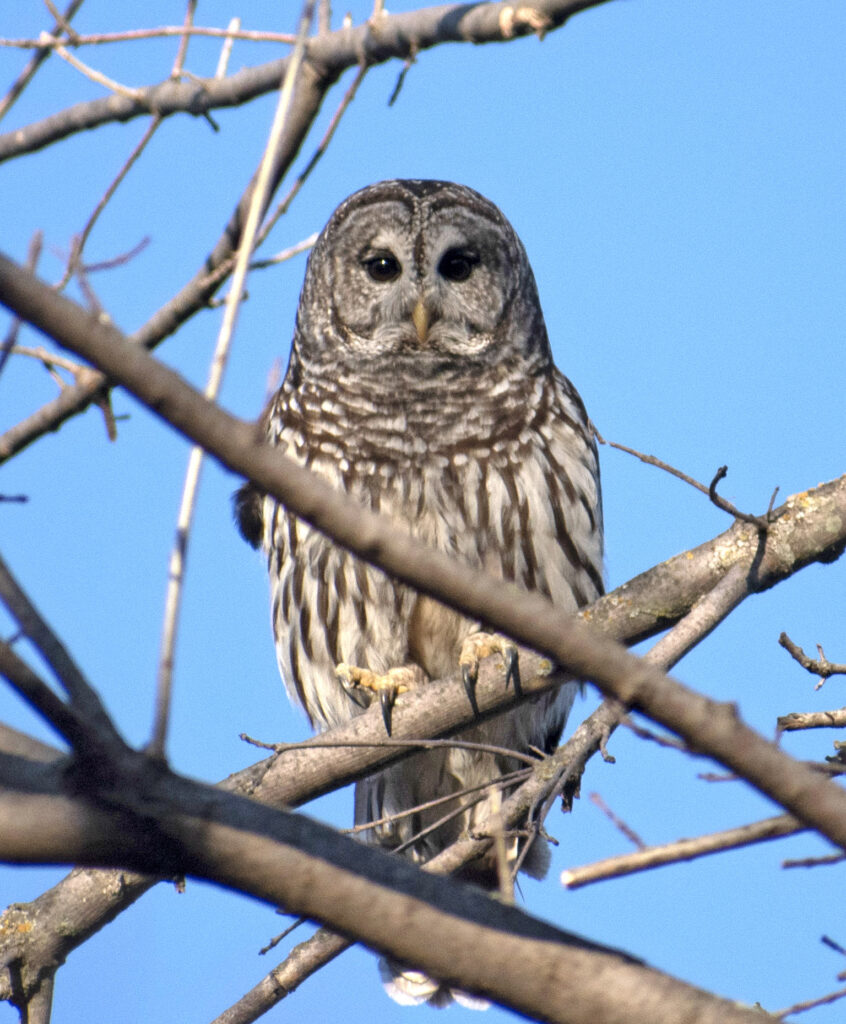
By Grace Huffman
If you know me, you know some of my favorite birds are owls. I’m not sure why, but seeing or hearing one always brightens up my day! One of the owls I come across most often while out birding is the Barred Owl. They can be found over much of the state except the far west. Nationwide they are common over the eastern United States, north into Canada, and down along the west coast.
Barred Owls are large, silent flyers. They are a bit smaller than Great Horned Owls and a warmer brown overall, but still have an impressive silhouette when you can find them. You are more likely to hear their “who cooks for you” calls, though. While you are most likely to hear them at dawn and dusk, I’ve heard them mid-morning or even late afternoon! If you want to go look for them, they prefer mature forests, which makes them even harder to find since there are plenty of spots for them to hide in.
While they may occasionally nest using an old crow or hawk nest, they usually nest in tree cavities, or large specifically-built nest boxes. They do very little to add any comfort to the nest site, but will occasionally perform a little housekeeping to make it work for them. They lay up to 5 eggs, which are incubated for about a month. It takes another month before the babies are ready to leave the nest. The babies stay with their parents for a while after fledging.
Barred Owls are considered Least Concern, and their population is increasing. Despite being very sedentary, they are expanding their range where out west they are displacing their smaller cousin, the Spotted Owl. Barred Owls are sensitive to logging, and are used to determine the health of old forests. Great Horned Owls are known predators of Barred Owls, typically taking eggs and young, but occasionally taking adults as well.
If you go out looking for owls, please don’t overly disturb them. If you flush one from its roosting place, don’t continue to chase the owl making it move repeatedly, especially in the daytime. Their roosting location is chosen so they can avoid being harassed by songbirds like jays and chickadees, which causes additional stress to the owl. Also, if you are out at night, don’t use flash to take photos. It affects their eyes just like ours, and for smaller species like screech owls, this puts them at risk of being hunted by predators like other owls since they temporarily can’t see. It’s best to just be out at dusk to look and listen!
